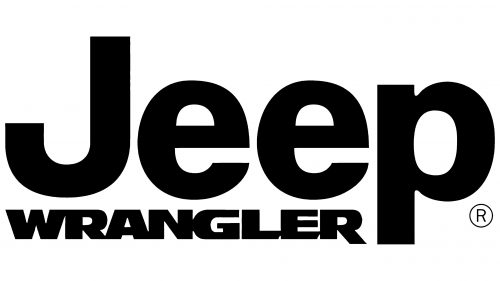The Jeep Wrangler logo represents the strength and power of the vehicle, making it the perfect choice for off-road adventures. Every symbol in the emblem promises protection, confidence, and safety on trips. Owners of the company’s models always dominate and feel like road kings.
Jeep Wrangler: Brand overview
The tale of the Jeep Wrangler begins in the tumultuous era of World War II. As Nazi Germany stormed through Western Europe in 1940, the American military recognized the need for a lightweight, agile, all-terrain vehicle. A tender was announced, and the small Pennsylvania company Willys-Overland surprised everyone by winning with their prototype, the Willys MB.
This “jeep” (likely derived from the military term “GP” for general-purpose vehicle) was simple, rugged, and incredibly versatile. It could conquer steep hills and ford rivers and even serve as a mobile power generator. General Dwight Eisenhower famously remarked, “The Jeep, the Dakota airplane, and the landing craft were the three tools that won the war.” Soldiers grew attached to these vehicles, often personalizing them with names and lucky charms.
After the war, Willys faced a dilemma: how to repurpose this iconic vehicle for peacetime. While many saw the jeep as a military relic, Willys envisioned broader possibilities. In 1945, they introduced the Willys CJ (Civilian Jeep), almost identical to its military predecessor. Marketed as a “universal vehicle” for farmers, park rangers, and adventurers, it initially had modest sales. Post-war America favored comfortable sedans over utilitarian jeeps, but the vehicle’s cult status grew through Hollywood films like “MASH” and “The Thomas Crown Affair.” It symbolized individualism and freedom, resonating deeply with the post-war generation.
In 1953, Kaiser Motors acquired Willys and refined the CJ over two decades, adding features like a folding windshield and removable doors—traits that still define the Wrangler today. By 1970, American Motors Corporation (AMC) took over, introducing the longer, more comfortable CJ-7 during the oil crisis. This model aimed to attract suburban buyers while maintaining its off-road prowess.
The Wrangler as we know it truly emerged in 1986 under Chrysler’s ownership. Facing competition from CJ copies, particularly Japanese models like the Toyota Land Cruiser, Chrysler reimagined the vehicle. The Jeep Wrangler YJ debuted with a wider track and lower hood for improved road handling, though its rectangular headlights sparked controversy among purists. Despite mixed reactions, the new design began a new era. Advertising campaigns portrayed the Wrangler as a symbol of youth culture, featuring activities like surfing, rock climbing, and music festivals in ads.
In the 1990s, the Wrangler evolved from a niche product into a pop culture icon. The 1996 TJ model introduced coil spring suspension for a smoother ride without compromising off-road performance. It also returned the beloved round headlights, reconnecting Jeep with its roots. A major cultural moment came with the 1993 film “Jurassic Park,” where red and gray Wranglers dashed around a dinosaur-filled island. Jeff Goldblum’s memorable escape from a T-Rex in a Wrangler turned the vehicle into a symbol of adventure.
The 2000s, under DaimlerChrysler, brought an existential crisis as SUVs flooded the market. Most buyers rarely ventured off-road, raising questions about whether the Wrangler should adapt to suburban life. The answer came in 2006 with the JK model, which doubled down on its heritage. Bigger, more powerful, and more capable, the JK introduced a four-door “Unlimited” model, making it family-friendly while retaining its off-road capabilities.
The JK’s debut solidified the Wrangler as a mainstay. Sales soared, especially after the 2008 financial crisis, as the Wrangler embodied core American values: honesty, resilience, and ingenuity. Buying a Wrangler became an expression of patriotism.
The 2010s saw the Wrangler’s global expansion. After Fiat acquired Jeep, it was promoted as an “American icon” across Europe, Asia, and Latin America. It became an ambassador of American culture, much like jeans or jazz. In China, where off-roading was rare, the Wrangler was sold as a symbol of adventure and freedom.
Back home, Toledo, Ohio, the Wrangler’s production base, experienced a renaissance. After decades of deindustrialization, the Jeep plant became the city’s largest employer. The 2018 launch of the JL generation marked the completion of a $4.5 billion factory renovation, revitalizing the town.
The JL model balances tradition with innovation. Its silhouette remains unchanged, but hybrid eTorque technology, advanced driver assistance systems, and built-in cameras for off-road adventures are beneath the classic exterior. In 2021, Jeep introduced the Wrangler 4xe, a plug-in hybrid capable of driving 21 miles on electric power before switching to gas.
While some purists grumbled about the move to electrification, many saw it as a natural evolution. The Wrangler has always adapted while keeping its essence intact. From battlefields to blockbuster movies, from suburbs to jungles, it remains a symbol of freedom, creativity, and the resilient American spirit even in the electric era.
Meaning and History
1987 – today
The Jeep Wrangler logo features the large “Jeep” inscription. The bold black letters immediately evoke the well-known off-road vehicle and Chrysler, emphasizing the brand’s strength and reliability. This inscription is recognizable and symbolizes the durability and quality of Jeep vehicles.
Below the large “Jeep” inscription is the word “Wrangler,” written in significantly smaller letters, roughly the size of the leg of the letter “P.” This word serves as a nickname for the YJ model and highlights its unique features and identity. The name “Wrangler” embodies the spirit of adventure and a connection to American history, especially the military jeeps of World War II.
The nickname “Wrangler” reflects a lifestyle associated with outdoor activities and independence. This perfectly matches the characteristics of the off-road vehicle, renowned for its ability to overcome any obstacles and take its owners to the most remote and challenging locations.





